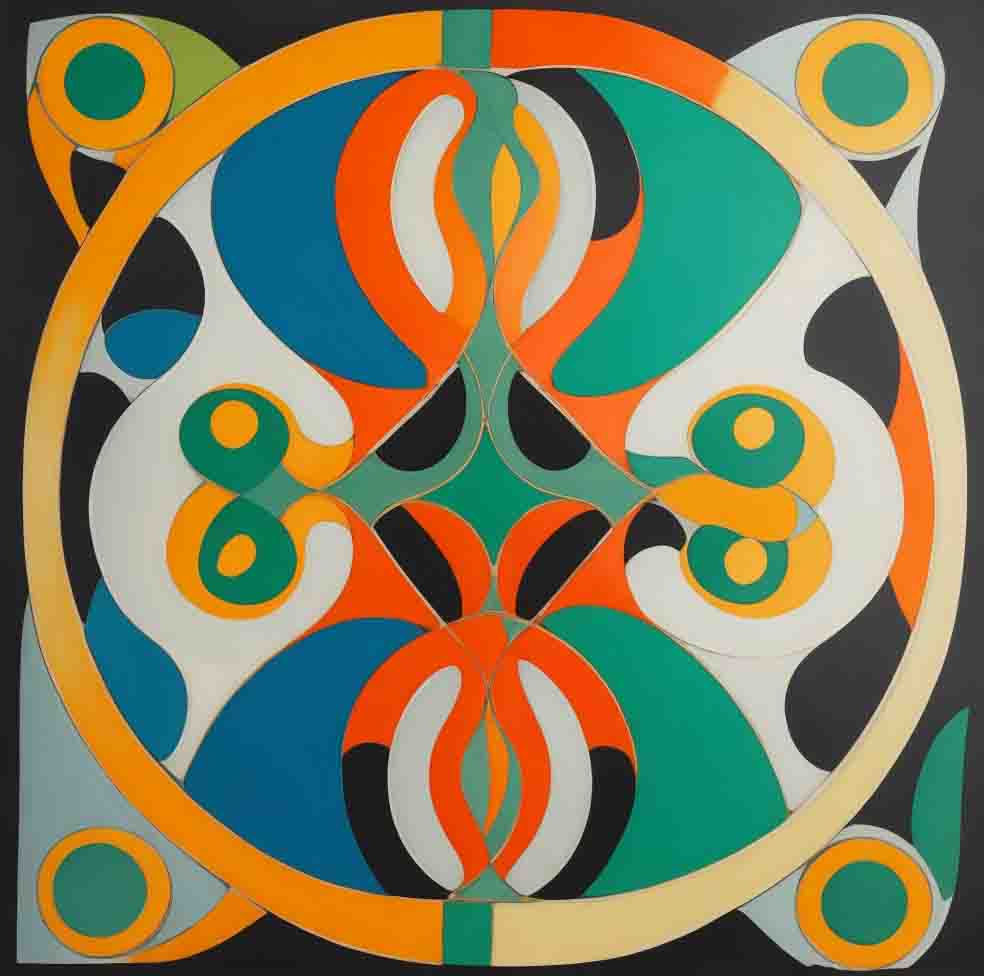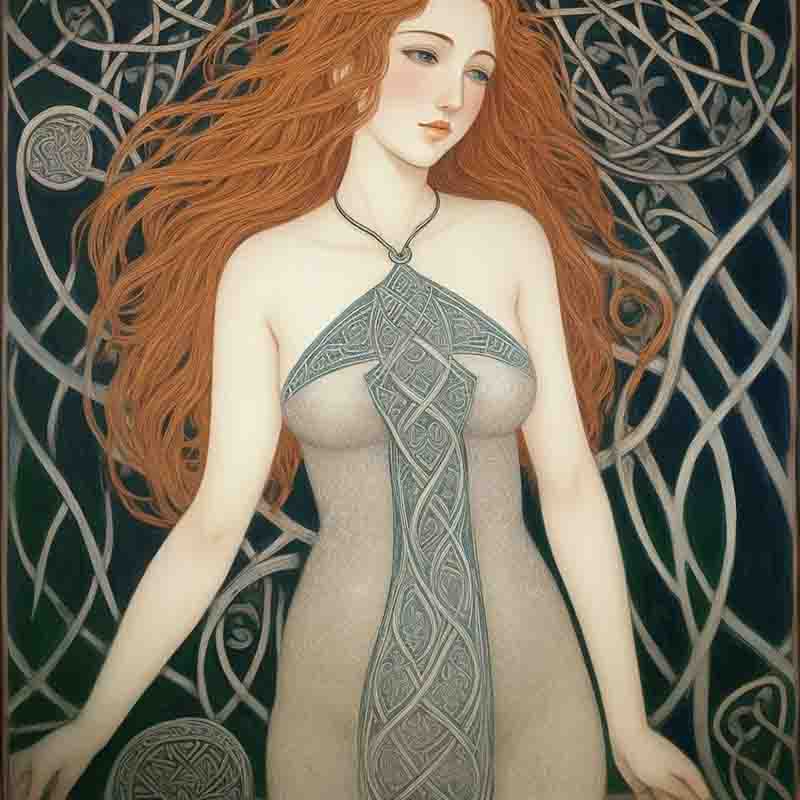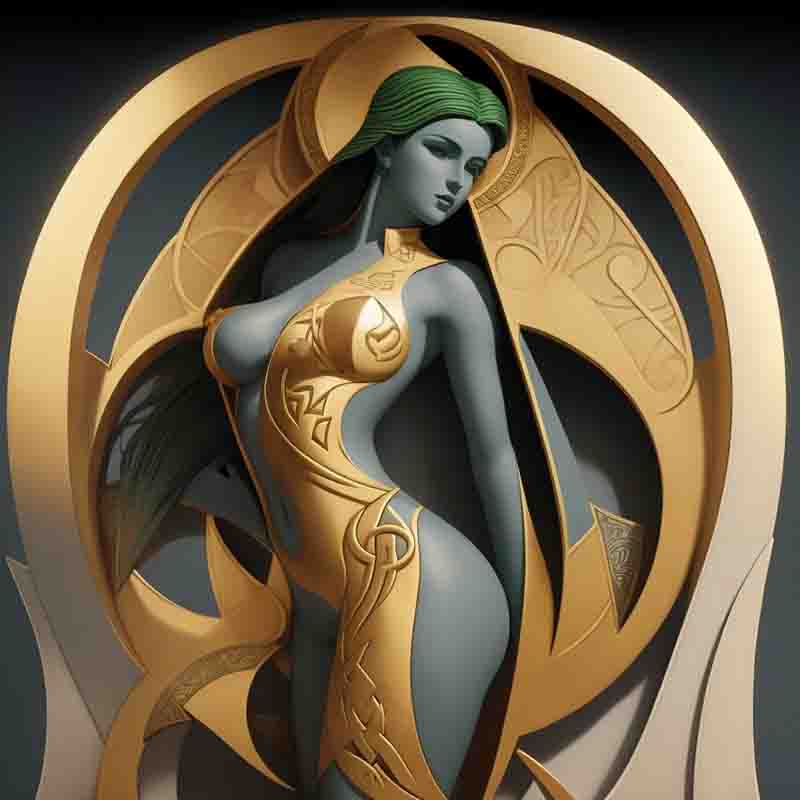The Origins and Historical Context of Celtic Art
Celtic art has a rich and diverse history, with its origins dating back to ancient times. The artistry of the Celtic people evolved over centuries, influenced by their interactions with other cultures and the changing historical landscape.

From the history of the Celts and their associated symbolism to modern interpretations and various art forms, there have been many elements that have shaped the course of Celtic art.
Celtic artistic traditions
Celtic art, manifested in multiple mediums such as visual art as well as ornamental jewelry design is known for its intricate and fascinating patterns.
To truly appreciate its complexity and significance, it is necessary to examine its intriguing origins and historical context.
Understanding the historical context of Celtic art provides invaluable insights into the origins, development, and cultural significance of this artistic tradition.
It is a testament to the creativity and craftsmanship of the Celtic peoples, and it continues to captivate art enthusiasts and historians worldwide for its timeless beauty and enduring symbolism.
Celtic art is renowned for its distinct and captivating characteristics, marked by intricate patterns, symbolic motifs, and a deep connection to nature and spirituality.
Celtic Art Collections around the World
| Museum | Location | Description | |
|---|---|---|---|
| The British Museum | London, England | Houses a substantial collection of Celtic art and artifacts, including the famous Gundestrup Cauldron. | |
| National Museum of Ireland | Dublin, Ireland | Features an extensive Celtic art collection, showcasing Ireland's rich artistic and cultural heritage. | |
| National Museum of Scotland | Edinburgh, Scotland | Exhibits a diverse range of Celtic artifacts, from intricately decorated Pictish stones to early metalwork. | |
| The Louvre Museum | Paris, France | Home to exceptional Celtic artifacts, including the iconic "Vix Krater" and various Gaulish treasures. | |
| National Museum of Wales | Cardiff, Wales | Houses a notable collection of Celtic art, with a focus on Welsh cultural heritage and archaeological finds. | |
| The Metropolitan Museum of Art | New York City, USA | Showcases a collection of Celtic art and artifacts, offering insights into the artistic achievements of the Celts. | |
| The National Museum of Denmark | Copenhagen, Denmark | Displays a wide range of Celtic artifacts, including the famous Gundestrup Cauldron and Iron Age gold objects. | |
| The Ashmolean Museum | Oxford, England | Houses an impressive collection of Celtic art and archaeology, highlighting the cultural diversity of the Celts. | |
| The Ulster Museum | Belfast, Northern Ireland | Showcases Celtic art and archaeological finds, providing insights into Ireland's ancient past. |
These museums house valuable collections of Celtic art and artifacts, allowing visitors to explore the rich cultural heritage of the Celtic peoples.
Celtic Art: Historical Context

Celtic art's symbolism goes beyond aesthetics; it invites contemplation of eternal themes such as unity, continuity, and the interconnectedness of all living things.
Celtic art is an ancient and distinctive artistic tradition that bears the cultural imprint of the Celtic peoples who lived in Europe during the Iron Age and early medieval periods.
To fully appreciate the beauty and significance of Celtic art, it's essential to explore its origins and historical context in depth.
-
Celtic Migration: The Celts were an Indo-European people who migrated across Europe from the late Bronze Age (around 1200 BCE) onwards. They brought with them their artistic traditions and cultural influences.
-
Interaction with Other Cultures: Celtic art was influenced by interactions with other cultures, including the Greeks, Romans, and Germanic tribes. This cross-cultural exchange had a significant impact on Celtic art styles.
-
Hallstatt Period (c. 800-475 BCE): This early period is known for its intricate metalwork, including bronze and gold jewelry and weapons. Hallstatt art featured geometric designs, stylized animals, and human figures.
-
La Tène Period (c. 450 BCE - 1st century CE): The La Tène period marked a high point in Celtic art, characterized by intricate curvilinear patterns, including the famous Celtic knots and spirals. Decorative motifs often featured zoomorphic (animal) and anthropomorphic (human) elements. Artifacts from this period include weapons, jewelry, and elaborate cauldrons.
-
Roman Influence (1st century BCE - 4th century CE): During Roman expansion, Celtic art was influenced by Roman artistic styles, leading to a fusion of Celtic and Roman motifs. This period saw the development of Christian Celtic art with the introduction of Christianity to the Celtic regions.
-
Insular Art (6th - 9th centuries CE): Insular art refers to the artistic traditions of the British Isles, particularly Ireland and Scotland, after the fall of the Roman Empire. It is characterized by intricate illuminated manuscripts like the Book of Kells, metalwork, and stone carvings featuring intricate interlacing patterns and religious themes.
-
Revival and Modern Interpretations (19th century - present): The 19th century saw a revival of interest in Celtic art, with artists drawing inspiration from ancient Celtic designs. Contemporary Celtic art incorporates both traditional motifs and modern interpretations, often used in jewelry, tattoos, and various art forms.
Key Periods and Styles
Celtic art can be divided into several key periods and styles, each characterized by distinctive features.
Evolution of Celtic Art in the Modern Era
Celtic art, with its rich historical roots and enduring symbolism, has not remained static. It has evolved and adapted to the changing times and tastes of the modern era.
The late 19th and early 20th centuries saw a Celtic Revival, a cultural movement that celebrated and rekindled interest in Celtic art, literature, and heritage.
Figures like William Butler Yeats and Lady Gregory played pivotal roles in this revival.
The Art Nouveau movement of the late 19th and early 20th centuries drew inspiration from Celtic art, particularly its flowing and intricate patterns.
Artists like René Lalique incorporated Celtic motifs into their jewelry and glasswork.
Celtic art carries cultural and historical significance for those with Celtic heritage or an interest in Celtic culture.
Contemporary Celtic Art Revival

Celtic art evolved from its origins in early Celtic civilizations, such as the Hallstatt and La Tène cultures, to encompass a range of styles and influences, including Roman and Christian. It continues to adapt and find new expressions in the modern era.
Celtic art has indeed evolved in the modern era, with artists and artisans incorporating new themes, materials, and techniques while staying true to the essence of Celtic design.
Celtic motifs and patterns are frequently used in digital art, graphic design, and web design.
Artists and designers adapt traditional Celtic elements to create visually striking and culturally resonant digital works
Contemporary Celtic artists often infuse traditional Celtic art with new themes, reflecting current social and cultural concerns.
This fusion results in artworks that are both rooted in tradition and relevant to contemporary audiences.
Many contemporary Celtic artists engage in mixed media art, combining traditional techniques with digital tools, photography, and other modern mediums.
This evolution has resulted in a vibrant and diverse range of contemporary Celtic artwork.
Celtic art and the myths and legends of the Celtic people
Celtic art not only serves as a form of artistic expression but also acts as a visual language through which the myths, legends, and spiritual beliefs of the Celtic culture are conveyed.
Celtic art often includes depictions of mythological figures, gods, and goddesses. These representations may appear on objects like stone carvings, jewelry, and illuminated manuscripts.
For example, the Irish god Lugh, associated with craftsmanship and skill, is sometimes depicted with his attributes in Celtic artwork.
Many elements in Celtic art have symbolic significance that is rooted in mythology.
Celtic art not only preserves and communicates these stories but also serves as a means of connecting with the past, celebrating cultural identity, and conveying the deep spiritual and mythological traditions of the Celtic culture.
The connections between Celtic art and the myths and legends of the Celtic people are profound and deeply intertwined.
Celtic Wall Art and Collectibles
Celtic wall art is a fascinating and versatile form of decoration that can instantly enhance the ambiance of any living space.
Whether in the form of a poster or a limited edition art print, all Celtic wall art captures the essence of ancient culture and symbolism.
Celtic collectibles are valuable treasures for enthusiasts and collectors alike, offering a one-to-one contact with the rich Celtic culture.
Rare Celtic collectibles not only hold intrinsic value but also serve as windows into the profound heritage and mythology of the Celtic peoples.
Whether you're an art enthusiast, a cultural explorer, or someone simply seeking aesthetic inspiration, Celtic art invites you to unlock its mysteries and embrace its timeless beauty.
Celtic Art: FAQ
Are you curious about music, art, technology, fashion, humanity, lifestyle, and beer?
If so, then you need to subscribe to the free Likewolf newsletter.
100% privacy. When you sign up, we'll keep you posted.
Your Celtic Adventure Continues
The origins of Celtic art go back to ancient times
